Last week I took some of our specwriter apprentices on several field trips, so I have LOTS of photos to share. One of our destinations was the Museum of Fine Arts in Boston, a project I wrote the specification for 8-9 years ago. The addition has been occupied since 2010, and the doors and hardware still look great. That’s not always the case, as the doors start to show wear and tear, or facility personnel address issues by installing random hooks and plates or replacing hardware that has become damaged. I’m very happy with how things are holding up.
I’ve posted photos of the MFA from past visits (like the stainless steel elevator lobbies and some other interesting applications), but this time I was able to see the auditorium which has some cool rabbeted doors (for acoustics) and some almost-invisible doors at the storage room and projection room. There were quite a few unusual egress situations on this project that required permission from the AHJ. What do you think of this one?
Here’s another opening from right outside the auditorium…
I often find that I am more cautious about modifying code requirements than even the AHJ. This opening is serving an Assembly occupancy, where delayed egress is not allowed by the IBC. In addition, the AHJ approved the 30-second delay instead of 15 seconds. It doesn’t keep me awake at night, but I definitely advised the architect that they would need AHJ approval. Luckily, this architect was great to work with and appreciated my concerns.
Have you ever worked with an architect or owner who wanted something specified or installed that was not code-compliant? How did you handle it?
You need to login or register to bookmark/favorite this content.


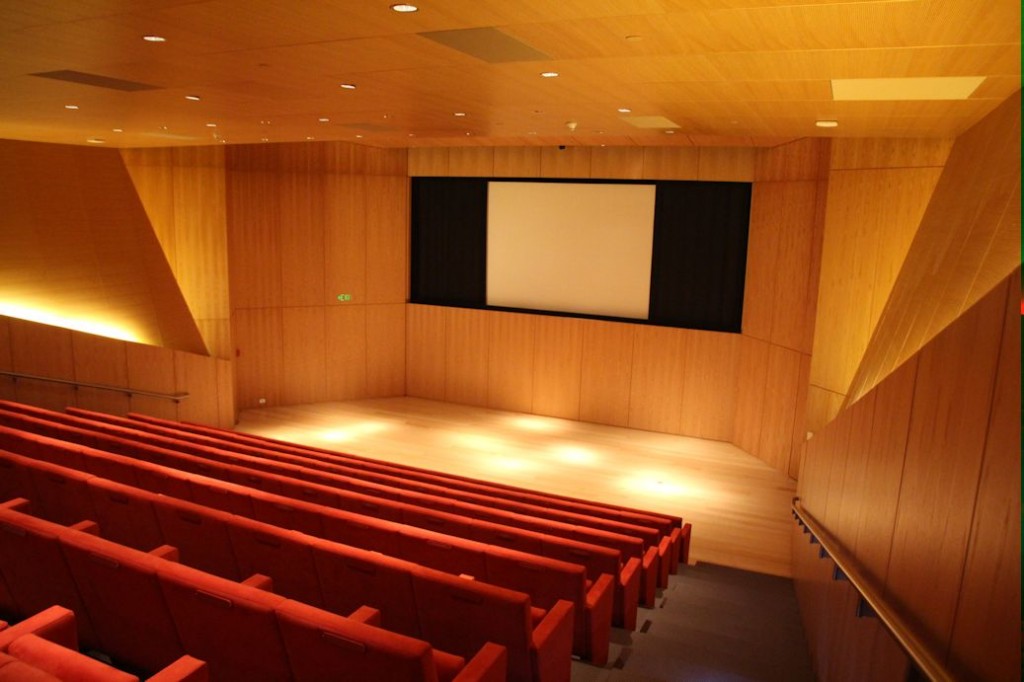
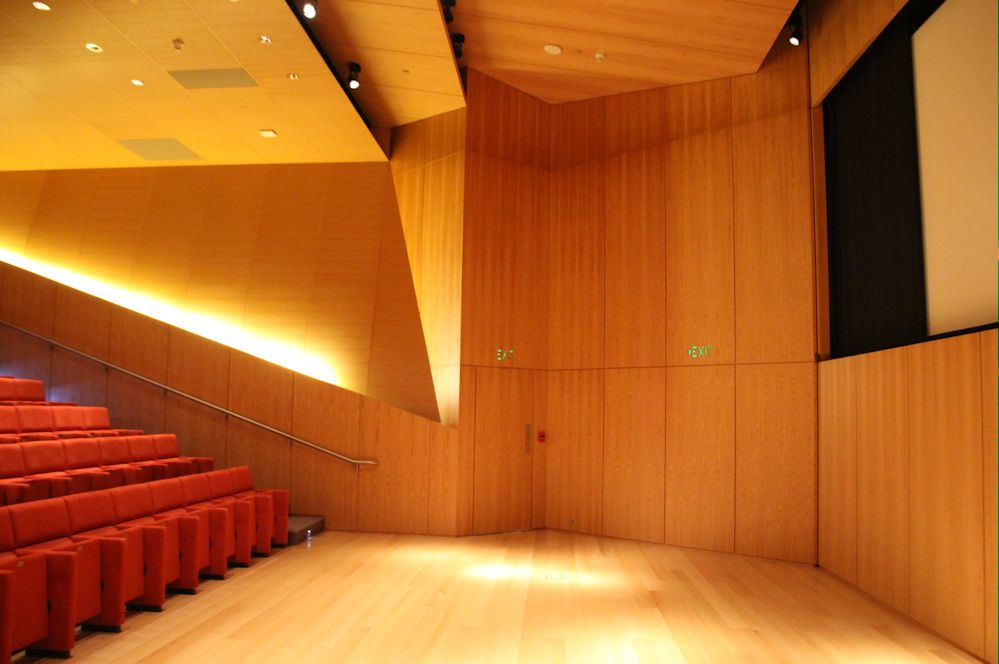
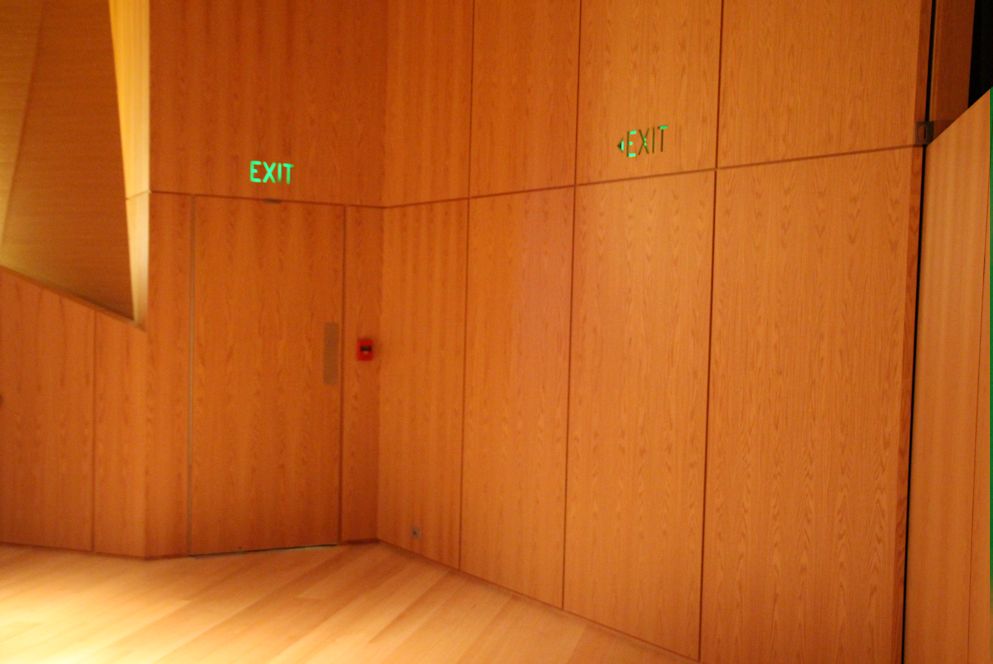
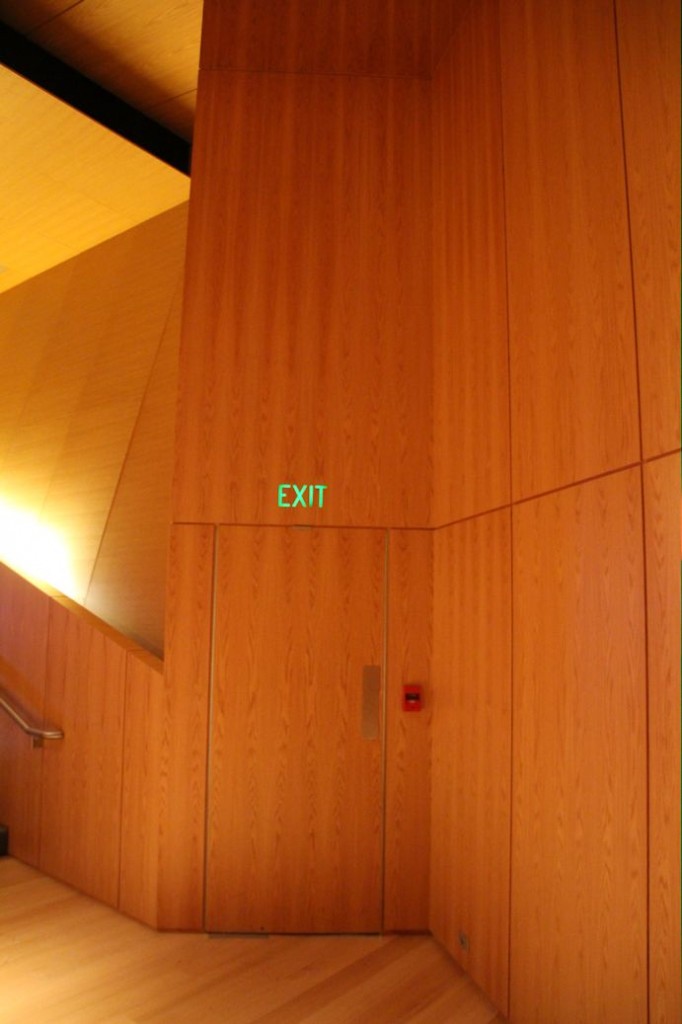
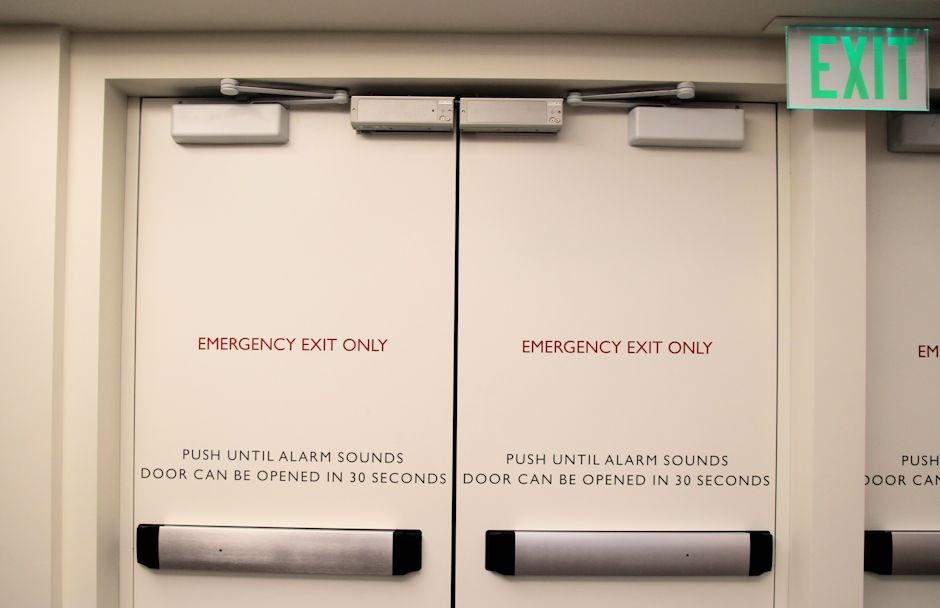




Just curious what they were so worried about protecting that they needed the 30 seconds? 15 seconds is a very long time to wait in an emergency situation (non-fire alarm) to get these doors to open.
Lots and lots of art. 🙂
– Lori
I document everyday work. I’d specifically note my opposition to a request. This way if it’s approved and an accident happens, and this feature is found to have caused the injury or death, I’m not criminally negligent and I have the documentation to prove it to a judge.
There is no code how far to one side the release bars can be?
Such as with balanced doors.
Any thought, I know people would normally push in the middle of the two doors
The IBC and NFPA 101 require the actuating portion of the panic hardware to be at least half the width of the door, but neither of those codes says where the device has to be positioned on the door as long as it’s not a balanced door.
– Lori
How does the code work for the wood doors that are the same as the wood wall panels? Wouldn’t that be just like painting an emergency exit door so that you couldn’t see it? Don’t emergency exit doors need to be easily seen?
Yes, the door is supposed to be easily seen. I was kind of surprised this was allowed.
Sorry – I didn’t see this comment until now! Yes, emergency exit doors need to be readily distinguishable as doors, so the doors in the photo required permission from the fire marshal.
I am not fond of the hidden invisible door idea. In addition, the exit sign that can be seen from the seating area confuses the issue. The little arrow to the left is not seen in an emergency, only the word exit. And then the door comes into view only after pushing on a wall that wont move. It should look more like a real door and the fact that it is hidden around a corner should be enough.
As for the delayed egress, I would hope that many people have email proof of their objection in this case and that they also have the email document of the AHJ saying do it. I would have objected verbally in construction meetings and followed with emails, (lots of them) I hope nothing ever happens or he is in trouble. Are the doors at least released by the fire alarm and all other delayed egress specs followed?
Hi Rich –
Yes, the delayed egress is compliant other than the occupancy type.
– Lori